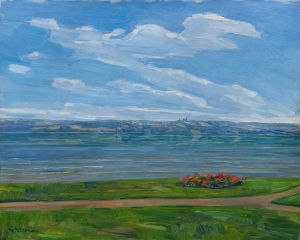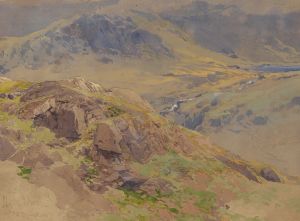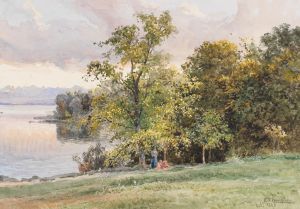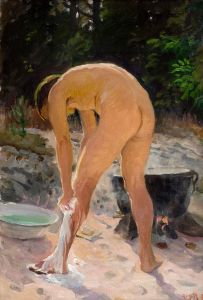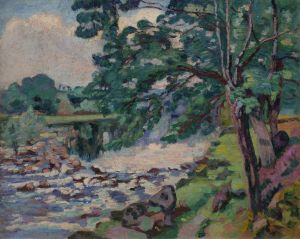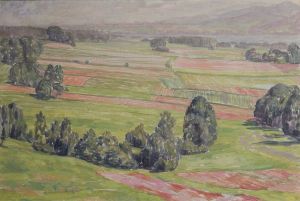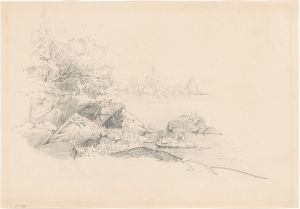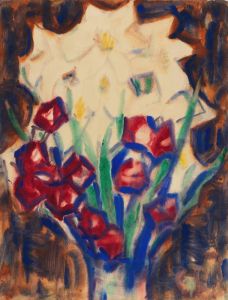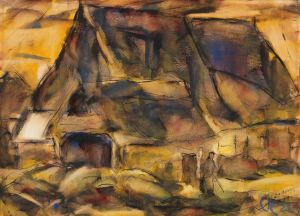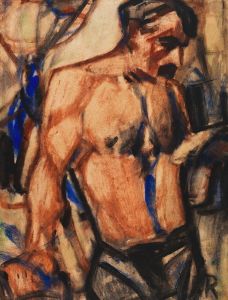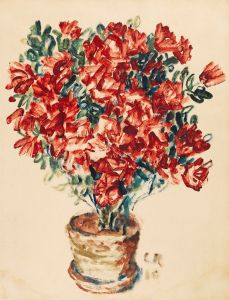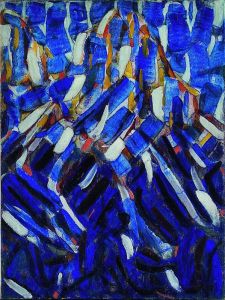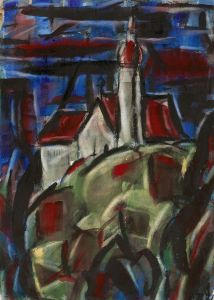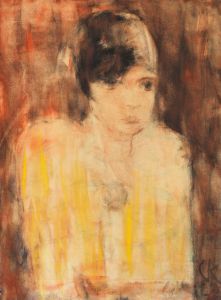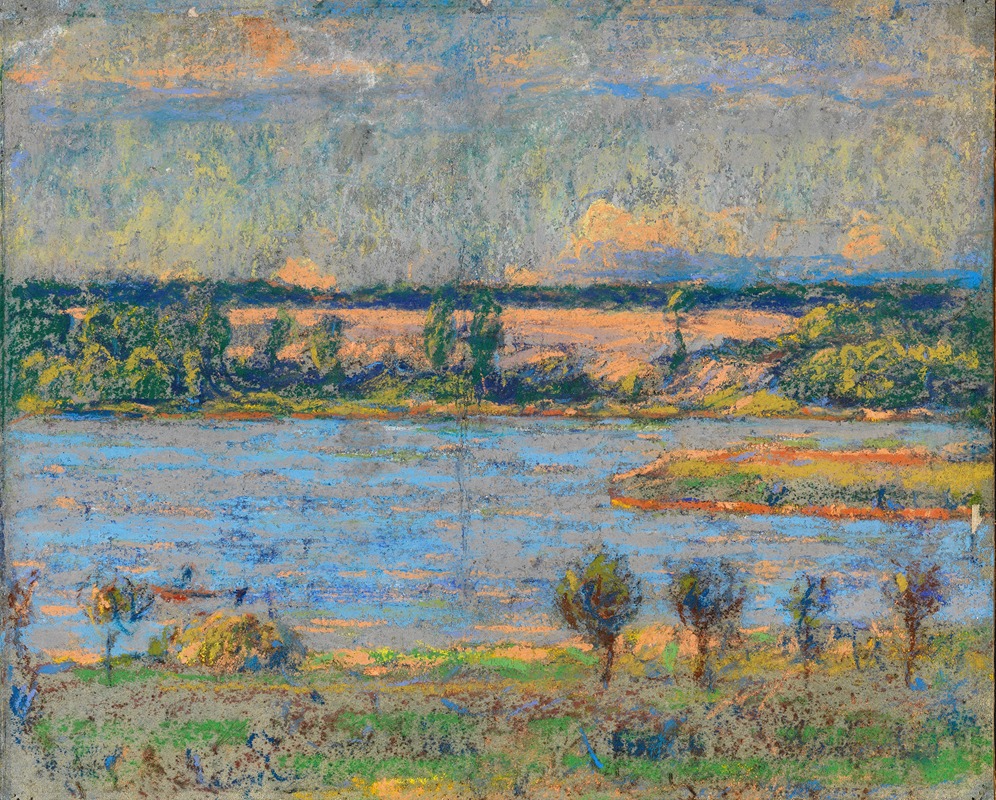
Teich am Abend
A hand-painted replica of Christian Rohlfs’s masterpiece Teich am Abend, meticulously crafted by professional artists to capture the true essence of the original. Each piece is created with museum-quality canvas and rare mineral pigments, carefully painted by experienced artists with delicate brushstrokes and rich, layered colors to perfectly recreate the texture of the original artwork. Unlike machine-printed reproductions, this hand-painted version brings the painting to life, infused with the artist’s emotions and skill in every stroke. Whether for personal collection or home decoration, it instantly elevates the artistic atmosphere of any space.
Christian Rohlfs was a German painter known for his contributions to Expressionism. Born on December 22, 1849, in Niendorf, Holstein, Rohlfs initially studied at the Grand Ducal Saxon Art School in Weimar. His early work was influenced by Impressionism and Post-Impressionism, but he later became associated with the Expressionist movement, which is characterized by its emphasis on representing emotional experiences rather than physical reality.
"Teich am Abend" (translated as "Pond in the Evening") is one of Rohlfs' notable works, although specific details about the painting, such as its creation date and current location, are not widely documented. Rohlfs' style often featured bold colors and dynamic brushstrokes, which were typical of the Expressionist movement. His work frequently depicted landscapes, figures, and scenes imbued with emotional intensity.
Rohlfs' transition to Expressionism was influenced by his exposure to the works of Vincent van Gogh and Edvard Munch, as well as his interactions with other German Expressionists. His paintings from this period are marked by a vivid use of color and a focus on capturing the emotional essence of his subjects. "Teich am Abend" likely reflects these characteristics, using color and form to convey the mood and atmosphere of an evening scene by a pond.
Throughout his career, Rohlfs faced several challenges, including health issues that affected his ability to work. Despite these difficulties, he remained a prolific artist, producing a significant body of work that contributed to the development of modern art in Germany. His paintings were exhibited in numerous galleries and exhibitions, earning him recognition as a leading figure in the Expressionist movement.
In 1937, during the Nazi regime's campaign against what they termed "degenerate art," many of Rohlfs' works were confiscated from German museums. This campaign targeted modernist artists whose works did not align with the regime's ideology. Despite this setback, Rohlfs continued to paint until his death on January 8, 1938, in Hagen, Germany.
Today, Christian Rohlfs is remembered as a significant figure in German Expressionism. His works are held in various collections, including the Christian Rohlfs Archive at the Osthaus Museum in Hagen, which houses a comprehensive collection of his paintings, drawings, and prints. "Teich am Abend," like many of his works, exemplifies his ability to convey emotion and atmosphere through his distinctive use of color and form.
While specific information about "Teich am Abend" is limited, the painting remains an important part of Rohlfs' oeuvre, reflecting his artistic evolution and his contributions to the Expressionist movement. His legacy continues to influence contemporary artists and is celebrated in exhibitions and retrospectives dedicated to his work.





